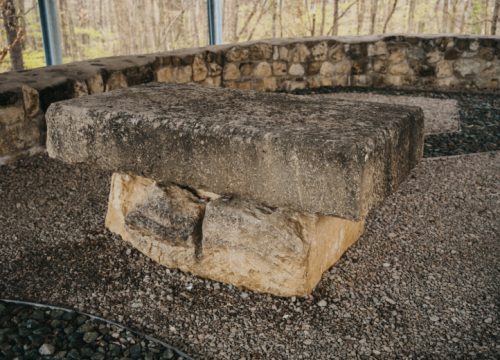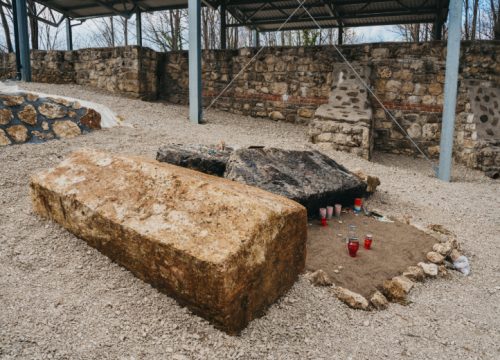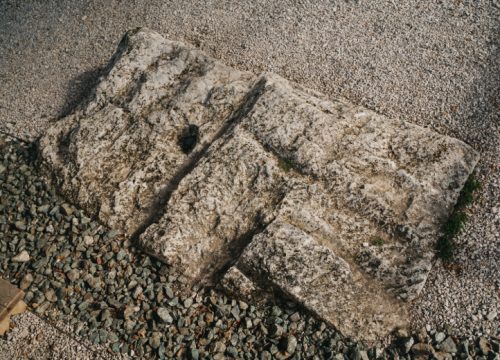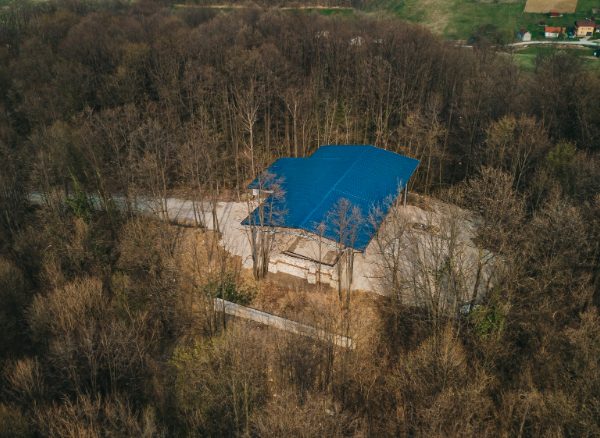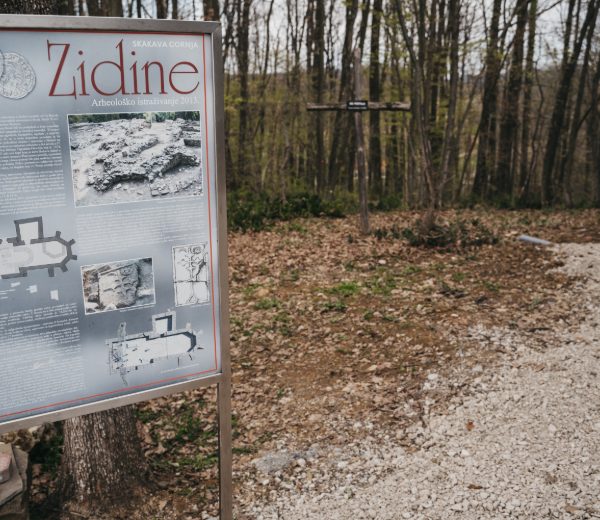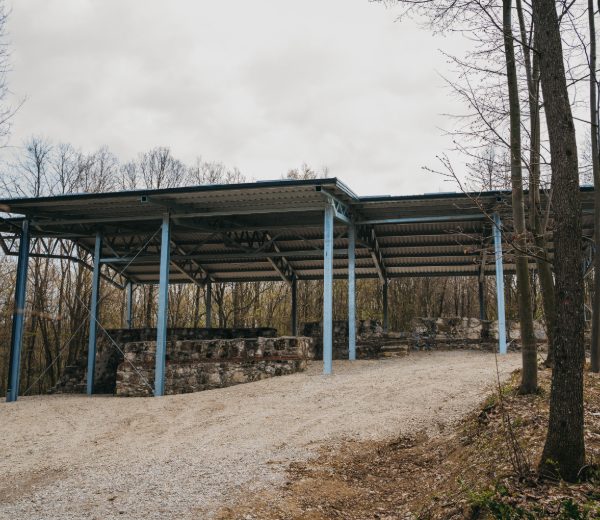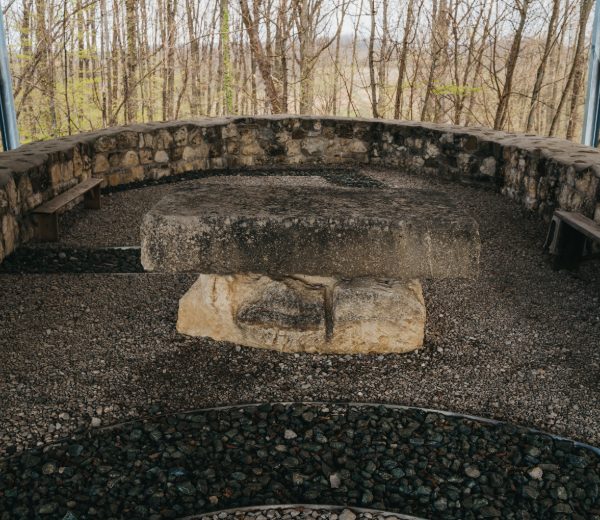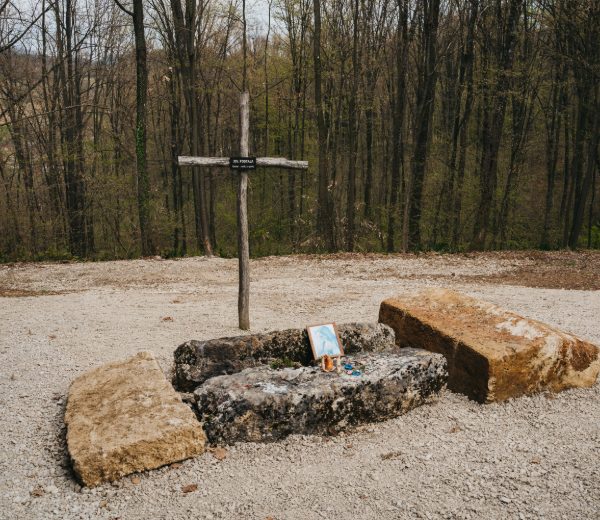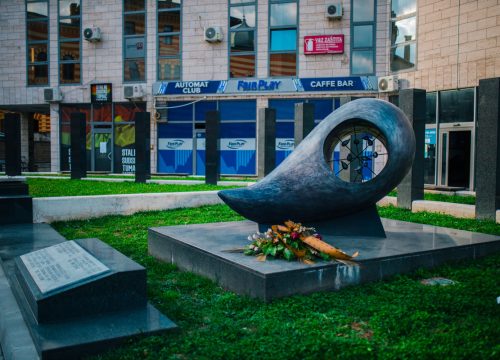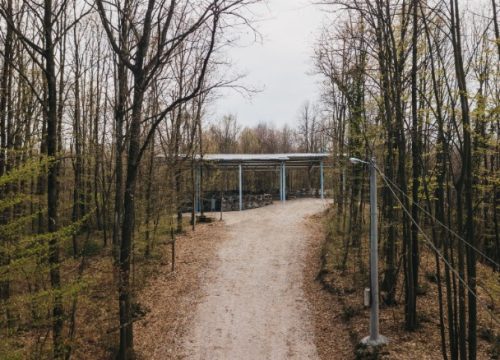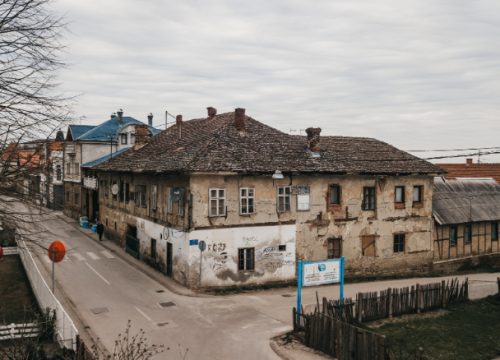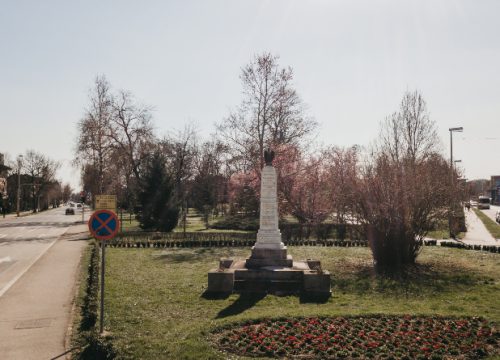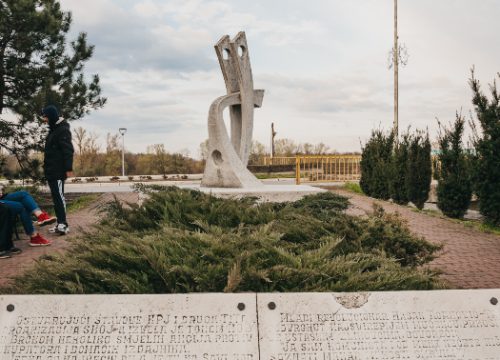The archaeological site of Zidina is located in Gornja Skakava, about 20 km from Brčko. At the highest point of the hilly elevation on which the archaeological site was located in 1983. the chapel of St. Francis was built.
The archaeological site consists of the remains of the foundations of a Gothic monastery church, a Romanesque church, an older sacral complex (baptism), a necropolis and movable heritage. Remains of buildings dating from pre-Romanesque to the late Middle Ages were found on that site. A large number of stećaks as well as graves were found in and around the church.
The baptismal font is the oldest archaeological find. It had a hexagon floor plan. Fonts of this type are related to early Christian church buildings and have been around since pre-Romanesque times in Dalmatia. The Romanesque church dates back to the 13th century. century. The remains of the walls of the one-nave church measuring 13.22 x 7.66 meters were found, the perimeter walls of which were almost completely removed because its building material was used to build the monastery church. The church had an eccentric floor plan with a vaulted semicircular sanctuary above which was a tabulatus.
The Gothic monastery church dates from the first half of the 14th century. century. The ground zone of the walls was discovered. The one-nave church had dimensions of 23.50 x 9.16 meters with an elongated polygonal sanctuary framed by supporting walls, which was built in accordance with Gothic architecture. On the northern side of the sanctuary was the sacristy, which was later added to the whole church. Nine specimens of stećak were found inside the nave of the church, as well as seven specimens outside the church. Of these, three stećaks were decorated.
Five graves were found inside the church, and four outside the church. The graves were skeletal and all were covered with stone slabs or chests, which was a rare occurrence in medieval churches in Bosnia and Herzegovina.
In addition, a medieval cemetery was discovered, where the graves were arranged in rows. More recent research has also revealed corresponding items with the deceased, such as: a silver ring, one fragmented iron buckle, three silver coins and five pieces of decorated tiles.
The movable heritage from the graves is located in the parish church of the Franciscan monastery of St. Anthony of Padua in Dubrava.
